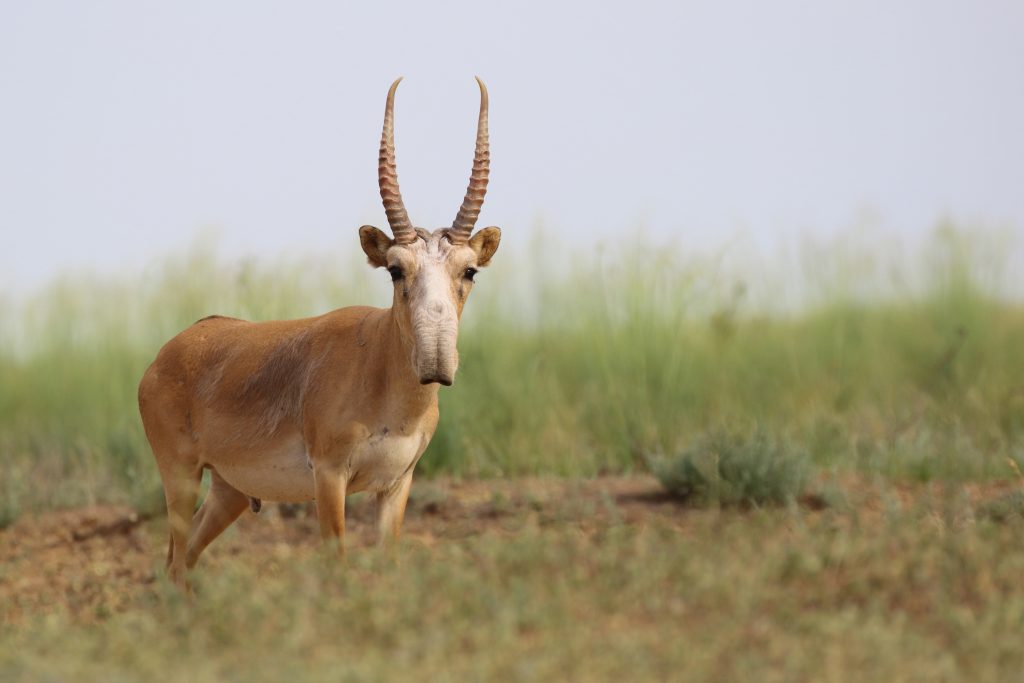23.8.2019. A decision taken yesterday at the CITES Conference of the Parties (CoP) will see the introduction of a zero quota on trade of wild specimens for commercial purposes to both species of saiga antelope, which will remain in Appendix II, pending final decision by Plenary in the coming days.
After discussing the proposal to list the critically endangered saiga in Appendix I at the CoP, the parties agreed to keep the species on Appendix II but with a zero export quota for commercial trade.
Saigas were until recently one of the fastest declining mammal species on the planet. In the decade from 1995 to 2005, over 95% of saiga populations disappeared from their traditional ranges in Mongolia, Kazakhstan, Uzbekistan and the Russian Federation. The species was listed as critically endangered on the IUCN Red List of Threatened Species in 2002.
The saiga faces severe threats in the wild, including poaching, mass mortality from disease, and linear infrastructure disrupting migration routes. Since 2010, all five populations of the species have been severely affected by at least one of these threats. Parts and derivatives of the saiga are traded in large numbers. Horns, which are used in Chinese Traditional Medicine are the main target of poaching, and horn-based products are still widely consumed, as a recent study in Singapore found out.
However, thanks to concerted conservation efforts by governments and NGOs in each range state, and despite a recent high-profile mortality event in 2015-16, which resulted in the deaths of more than 200,000 saiga in Kazakhstan, the species has shown incredible resilience and an outstanding ability to recover given the opportunity. It is also in the rare position of having an active international work programme to agree and implement conservation measures, under the Convention on Migratory Species, which is supported by CITES and coordinated by the SCA and ACBK. All the range states and NGOs working on saigas are members.
Recent surveys in Kazakhstan, carried out by the ACBK and government agencies noted that increased efforts to protect saigas are paying off. In the northwest Pre-Caspian region of the Russian Federation saigas are also showing signs of recovery. This is all positive news, which sees the overall saiga population increasing from around only 50,000 when the Memorandum of Understanding (MOU) started in 2006 to over 340,000 this year.
The CITES decision, and other decisions which ask Parties to get behind the CMS-CITES saiga conservation MOU and to tighten up controls on their stockpiles of saiga horns, demonstrate the concern that the international conservation community has for the future of this unique and enigmatic species.
Professor E.J. Milner-Gulland, SCA Chair and technical advisor to the MOU, said:
“For me the most important thing was that all the range states were able to reach consensus about the way forward. Given the many challenges faced by saigas, it’s important that we all work together to secure its future”.
For more information see CMS, CITES

